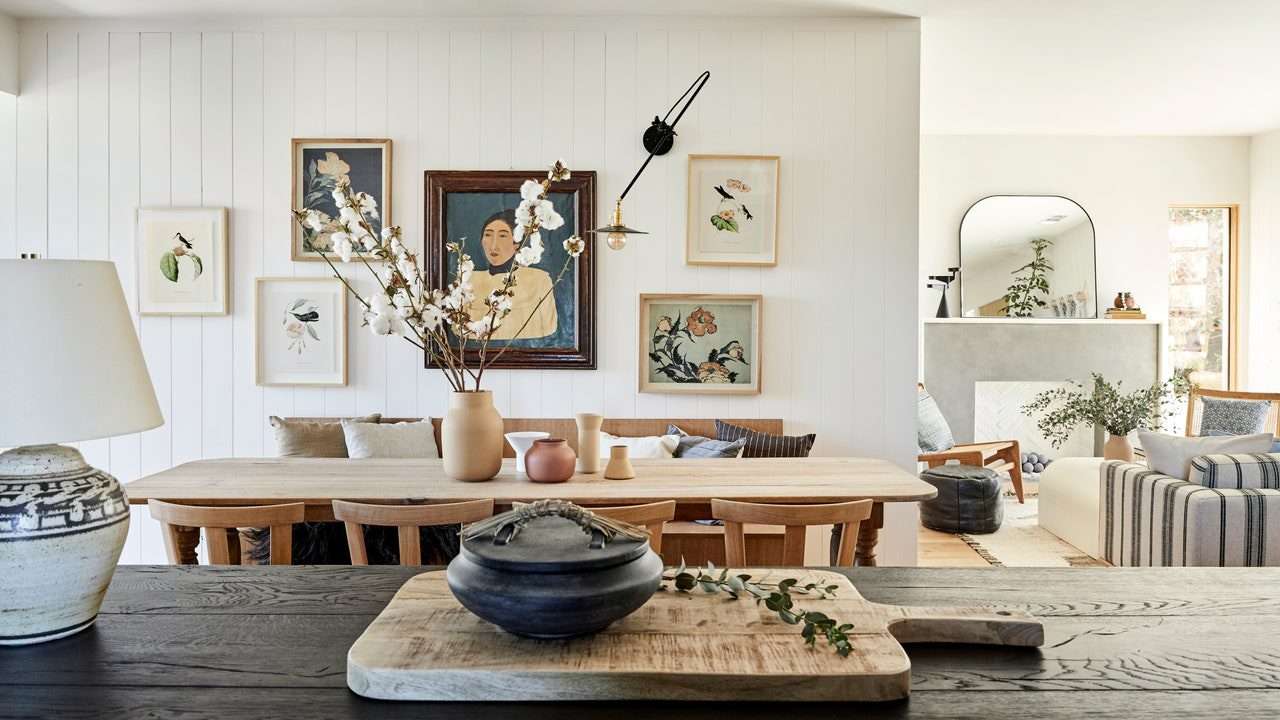Japandi Style: Everything You Need to Know
Though it may seem like a trendy buzzword, Japandi style in interiors is anything but a new aesthetic. A mashup of Japanese interiors and Scandinavian interiors—both of which have centuries worth of personal history—the roots of these intertwined aesthetics run deep. “Maybe some people think Japandi just happened, but the relationship between Japan and Scandinavia started a long time ago,” says Laila Rietbergen, the author of Japandi Living (Lannoo Publishers 2022) and owner of the popular Instagram account @japandi.interior. Though centered on tranquil, minimalist, and functional interiors, the aesthetic often permeates into more than just the look of a home. “This design style and principles truly supported a healthy meaningful lifestyle,” Shanty Wijaya, an interior designer and owner of AllPrace tells AD. “It teaches us to find beauty in imperfection, forms deep connections to the earth and nature, and enjoy the simple pleasures of life.”
What is Japandi style?
In the most basic sense, the Japandi style is a mixture of Scandinavian design and Japanese design. “It is the East-meets-West design movement. It blends Japanese artistic elements and wabi-sabi philosophy with Scandinavian comfort and warmth or hygge,” Wijaya explains. “Both Japanese and Scandinavian design aesthetics are focused on simplicity, natural elements, comfort, and sustainability.”
Rietbergen, who is from The Netherlands, fell in love with the Japanese decor and interiors after a trip to Japan in 2018. “One of the reasons I love Japandi is because it’s a blend and more than one interior style,” she says. Generally, Japandi’s interior design makes use of neutral colors, high-quality and natural materials, and an emphasis on greenery and nature. “In both Japan and Scandinavia, people love to spend time in nature and bring nature into their home,” Rietbergen says. “This resonates not only by using natural materials like wood and linen but also in the use of organic shapes and combining different shapes.”
Are Japandi and wabi-sabi the same?
As Wijaya notes, though Japandi includes many elements of wabi-sabi philosophy, it encompasses more than just this. “Wabi-sabi is based on traditional Japanese aesthetic and world view philosophy, while Japandi is the design movement consisting of both Japanese wabi-sabi and Scandinavian hygge philosophy,” she explains. Wabi-sabi can be understood as a part of Japandi interiors, but also its unique doctrine.
Consider how Rietbergen explains it in her book. “Wabi-sabi originated in China, but evolved seven hundred years ago into a Japanese ideal,” she writes. “It embraces the beauty of imperfection and being at peace with the imperfections of the world.” According to Rietbergen, wabi translates to “rustic simplicity” or “understated elegance,” and sabi means finding beauty in imperfection, particularly in items that have grown old over time. “For me, wabi-sabi is part of Japandi,” Rietbergen adds.
History of Japandi style
Japandi homes, though a more established style now, date back hundreds of years. “After the closed-border policy of Japan, which lasted for around 200 years. They opened their borders in the mid-1850s,” Rietbergen explains. Scandinavian designers and artists began visiting Japan and quickly became enthralled with the Japanese style. “They were very enthusiastic about the country, culture, and all the amazing items in the shops. These items became an inspiration for a lot of artists and designers in Scandinavia,” Rietbergen continues.


 العربية
العربية